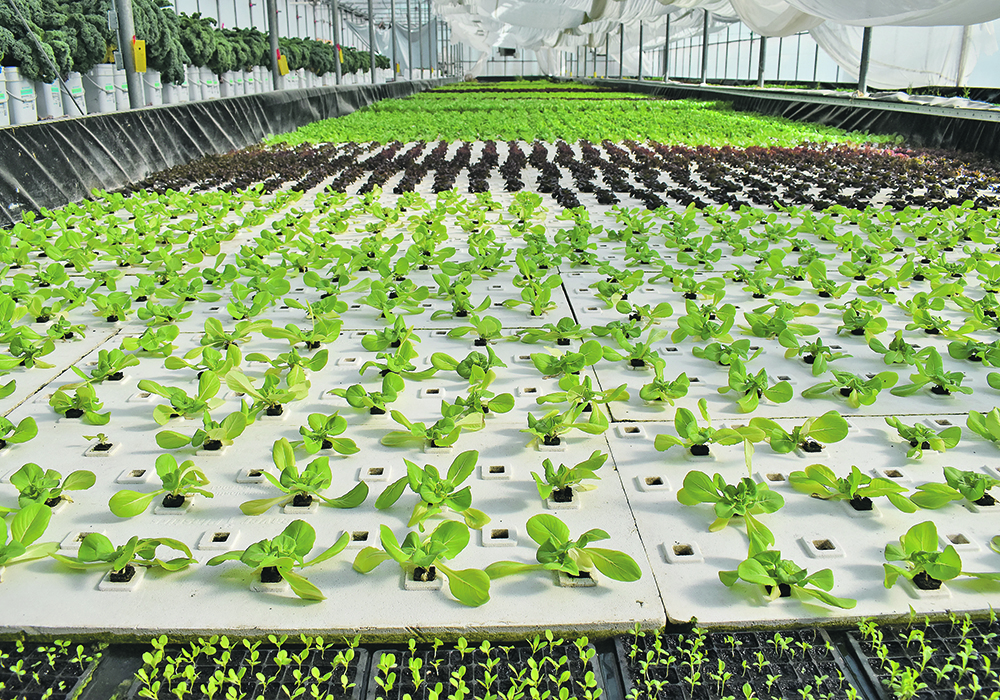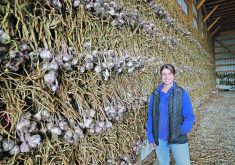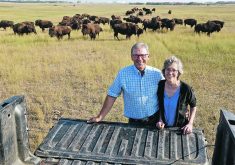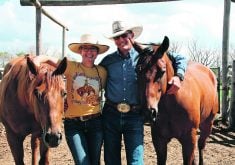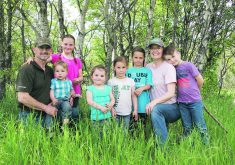NOBLEFORD, Alta. — At first, Andy Katoch’s reasons for starting a vegetable operation were selfish, he admits.
He and his family are vegetarian and he sought quality year-round food supplies to meet their needs.
But now his aquaponic operation in this southern Alberta town is supplying many with vegetables and serving as an example of how smaller operations on farms could provide sustainable income and stabilize vegetable supplies.
Katoch, a microbiologist by profession, operates Fresh Flavour Farm. At this point, he runs it single-handedly because hired labour has been hard to find.
His first foray into greenhouse vegetable production took place in his Ontario back yard in 2004. Soon his neighbours started asking him for produce and that further sparked his interest in chemical and pesticide-free food.
In 2016, he got in touch with Nick Savidov, a senior research scientist at Lethbridge College who has developed an aquaponics operation on campus. By 2017, Katoch had started his business in Nobleford.
“I had to create a demonstration set up to show people that agroponic really works, so we were one of the primary commercial units in agroponics in Canada. This is a demonstration model for other farms to see that it works,” said Katoch.

“Having a small pilot scale like this is a good demonstration for the farmers to understand that they can make a decent earning from a greenhouse operation, delivering this kind of produce.”
His indoor farm includes fish — red and blue tilapia — but unlike full aquaponic operations, Katoch does not sell fish as part of his business model. The fish provide fertilizer to the plants and the plants provide food for the fish but the fish aren’t part of the sales picture.
He does not kill or eat fish and has found in talking with farmers than most aren’t interested in the fish side of the business. Fresh Flavour Farm thus shows how fish can be used in a closed system of vegetable production without the need to market fish as well.
Read Also

Nutritious pork packed with vitamins, essential minerals
Recipes for pork
Katoch said fish contribute about 30 percent of the nutrients required by the lettuce, kale, chard and herbs that are grown in the greenhouse. Spent grains and algae supplement the fish diet.
Until recently, restaurants were the primary market for his produce, making up some 55 percent of the business. The pandemic altered that but he remains associated with on-line stores and works with local distributors to sell the vegetables — lettuce and kale — and herbs including chives, basil and mint.
Fresh Flavour Farm used to supply some produce to Sobeys and Safeway. However, the Canada GAP food safety program announced last year that it would no longer certify aquaponic operations and would withdraw previously existing certification, so those sales were eliminated.
Katoch said that decision was made without adequate data or research and he disagrees with its suggestion that food from aquaponic operations is unsafe. By its own admission, CanadaGAP said information about potential contamination in such operations has not been peer reviewed.
If that situation is remedied, Katoch said smaller operations like his could provide good income for farmers who choose to undertake them.
“The capacity is a good capacity for a family-owned operation. And this is a very highly efficient process,” he said. He can grow 7,000 heads of lettuce per week and 200 to 300 pounds of kale. Ideally, it would require 2.5 people to operate.
By planting and harvesting a portion of the crop each day, there’s a continuous four-week lettuce cycle from planting to harvest.
Using the benefits from the fish and biological controls for any damaging insects, Katoch said he has avoided chemical use on any produce.

“I didn’t want to give neurotoxins to my children. Those are harsh chemicals which never get out of the plants, which people do not realize. Being vegetarian, we have to eat a lot of this. A regular Canadian, who is eating only a little bit of greens, the effect of those chemicals are not that much,” he said.
“My intent now is to give people a crop which does not have those things but is more nutritious.”
He likes Nobleford as a location for several reasons. It is relatively close to city markets in Calgary and Lethbridge and the region has the highest number of sunlight hours in Canada.
As well, Nobleford has good water, although Fresh Flavour Farm has been continuously using the same water since 2017. The only loss is through sale of the water content in the vegetables themselves.
Katoch said that if more farmers undertook similar operations, it would help the country become more self-sufficient in terms of fresh vegetables and be less vulnerable to vagaries in trade and supply.
“We should understand from a food security point of view that Canada has to create its own food network system where it can generate at least 50 to 60 percent of its food,” he said. “This technology can grow all kinds of crops.”




